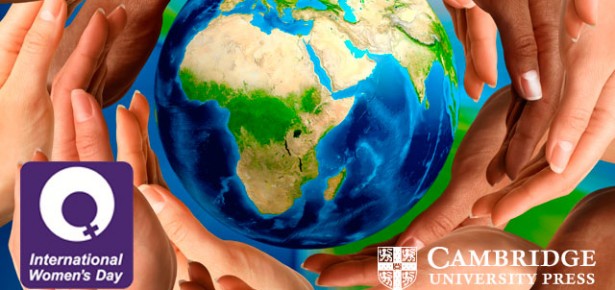
The countless female authors active in what we now call the Romantic period in Britain (1770-1830) would have little imagined the world’s celebrating an International Woman’s Day. Yet it’s true that many such pioneering writers were marking the contributions of women, recognizing the limits imposed on them, and calling for improvements in their status. These writers must have envisioned a time when women’s status as citizens would catch up to their growing stature in the literary world. As Mary Wollstonecraft wrote in A Vindication of the Rights of Woman (1792), let women’s “faculties have room to unfold . . . and then determine where the whole sex must stand in the intellectual scale.”
Some facts about Romantic-era women writers can be told in numbers, as several contributors do in the Cambridge Companion to Women’s Writing in the Romantic Period. Stephen Behrendt counts at least 500 women poets. Anthony Mandal adds that, of the 3,378 novels published in this period, 1,449 were by identifiably female authors. When we add in dramatists, travel writers, philosophers, essayists, and diarists—as well as the untold thousands of unpublished writers who may or may not have aspired to publication—it does seem to be, quantitatively, a watershed period for female authorship.
What happened to make this an especially rich moment for the expansion of professional women writers and women’s literary history? One theory is that changes in labor practices (the “Industrial Revolution”) and conversations and struggles around liberty and rights (the American Revolution, the French Revolution) gave some women an increased sense of possibility and opportunity for their lives.
Educated women with ambitions for fame and/or with a need for money were well poised to take advantage of new literary markets.
Another theory is that as education and literacy increased, more readers emerged. As print culture expanded, writers capitalized on a growth area in the economy. As copyright laws changed, new territory opened up for publishers and writers both. Educated women with ambitions for fame and/or with a need for money were well poised to take advantage of new literary markets. Women authors set out to meet the voracious needs of circulating libraries, which functioned a bit like today’s Netflix subscriptions. You paid a membership fee to a circulating library, allowing you to take out one volume of a fashionable publication at a time—perhaps a novel. You devoured it or read it aloud in a group, then returned it.
Yet today most of us associate women’s writing of the Romantic period with just two names: Jane Austen and Mary Shelley. Their mammoth reputations as the authors of Pride and Prejudice: A Novel (1813) and Frankenstein; or, The Modern Prometheus (1818) have eclipsed the hundreds of others actively publishing at this time. It was now little-recognized others who collectively served to make the category “professional woman writer” possible. It’s fortunate that readers of all stripes still recognize—through the continued celebrity of Austen and Shelley—that the early nineteenth century was a time when female literary genius could thrive. But it’s unfortunate that few today have any notion of the great scope of women’s accomplishments in a period of profound political, social, and literary change.
the early nineteenth century was a time when female literary genius could thrive.
As you celebrate International Women’s Day, take a moment to learn about and celebrate some of the Romantic era’s lesser-known women writers: dramatist Joanna Baillie (described in her own time as a female Shakespeare), learned classicist and Bluestocking Elizabeth Carter, bestselling and critically acclaimed poet Felicia Hemans, audacious lesbian diarist Anne Lister, prolific novelist Elizabeth Meeke, and intrepid travel writer Lady Hester Stanhope are just a few among them. Choose one, and read her work. Read about her. Add a sentence to her Wikipedia page. Mention her in conversation. Encourage others to do so, too.
Cambridge University Press is delighted to support International Women’s Day 2017 (8th March 2017). From the 6th-10th March we will be sharing brand new blog content from our authors which explore the themes of ‘IWD 2017’ and continue the discussion on feminism and women today and through the ages.
Cambridge will also be celebrating women in academia and their work by making a variety of book chapters free to read online – including some of the most vital contributions to feminist theory and women’s history. These will be accessible from: www.cambridge.org/IWD2017
Devoney Looser is editor of The Cambridge Companion to Women’s Writing in the Romantic Period, you can read a FREE extract from the book here
Latest Comments
Have your say!